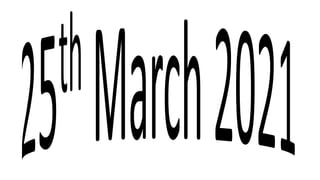
Thermodynamics Notes. .pptx
- 2. 4.0 Basic Thermodynamics Thermodynamics is the science of the relationships between heat and other forms of energy. A thermodynamic system is defined as the specified portion of matter which is separated from the rest of the universe with a bounding surface. It may consist of one or more substances. Boiling water in a beaker is an example of a thermodynamic system.
- 3. The rest of the universe which might be in a position to exchange matter and energy with the system is termed as surroundings. Consider a reaction between Zinc and dilute H2S04 in a test tube. Here the test tube forms a system. Everything also around this system is called surroundings. 4.0 Basic Thermodynamics
- 4. 4.1 Types of Thermodynamic Systems Closed system : In a closed system, exchange of energy with the surroundings is possible, while matter can neither enter into nor leave the system. Isolated system: In this system, there is no exchange of matter or energy between the system and the surroundings. Open system: In an open system, both matter and energy can enter into or leave the system and thus there can be an exchange of matter and energy between the system and the surroundings.
- 5. If a system is kept at constant temperature, it is called an isothermal system. If the system is so insulated from its surroundings that no heat flows in or out of the system, it is called an adiabatic system. A system is said to be homogeneous when it consists of only one phase, i.e., when it is completely uniform throughout. For example, a solution of salt is a homogeneous system. 4.1 Types of Thermodynamic Systems
- 6. A system is said to be heterogeneous when it consists of two or more phases, i.e., when it is not uniform throughout. For example, a mixture of two immiscible liquids is a heterogeneous system. 4.1 Types of Thermodynamic Systems
- 7. 4.2 Thermodynamic Processes Isothermal process: A process is said to be isothermal if the temperature of the system remains constant throughout the whole process. This is obtained by making a perfect thermal contact of the system with a thermostat of a large heat capacity. Isobaric process: A process is said to be isobaric if the pressure remains constant throughout the whole process.
- 8. Adiabatic process: A process is said to be adiabatic if no heat is allowed to enter or leave the system during the whole process. In such a process, therefore, the temperature gets altered because the system is not in a position to exchange heat with the surroundings. It is obtained by having the wall of the system made of perfect heat insulating substance. 4.2 Thermodynamic Processes
- 9. Isochoric process: A process is said to be isochoric if the volume remains constant throughout the whole process. Cyclic process: A process in which a system undergoes a series of changes and finally comes back to the initial state is known as a cyclic process. 4.2 Thermodynamic Processes
- 10. 4.3 Reversible and Irreversible Processes A process which is carried out infinitesimally slowly so that the driving force is only infinitesimally greater than the opposing force is called a reversible process. In short, it is a process which is carried out infinitesimally slowly so that the driving force is only greater than the opposing force In a reversible process, the direction of the process can be reversed at any point by making a small change in a variable like pressure, temperature etc.
- 11. Any process which does not take place in the above way, i.e., a process which does not occur infinitesimally slowly, is called an irreversible process. A reversible process cannot be realised in practice, it would require infinite time for its completion. 4.3 Reversible and Irreversible Processes
- 12. 4.4 Thermodynamic Equilibrium A system in which the macroscopic properties do not undergo any change with time is said to be in thermodynamic equilibrium. Thermodynamic equilibrium means the existence of three kinds of equilibria in the system. These are termed as thermal equilibrium, mechanical equilibrium and chemical equilibrium.
- 13. Thermal equilibrium : A system is said to be in thermal equilibrium if there is no flow of heat from one part of the system to another. This is possible when the temperature remains the same throughout in all parts of the system. Mechanical equilibrium : A system is said to be in mechanical equilibrium if there is no mechanical work done by one part of the system or the other. This is possible when the pressure remains the same throughout in all parts of the system. 4.4 Thermodynamic Equilibrium
- 14. Chemical equilibrium: A system is said to be in chemical equilibrium if the concentration of the various phases remain the same throughout in all parts of the system. 4.4 Thermodynamic Equilibrium
- 16. Group One: Laws of thermodynamics Group Two: Enthalpies of formation and Hess’ Law Group Three: Calorimetry and Gibbs Free Energy Group Four: Laws of Gases and partial pressures Group Five: Diffusion structures of solids and liquids and the concept of intermolecular forces
- 17. Submit a write up of not more than three pages Illustrate your work with equations and diagrams where applicable. Make a seven minutes power point presentation Submission and presentation are slated for not later than 8th April 2021